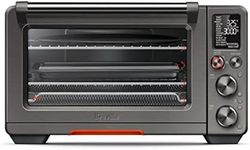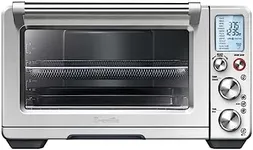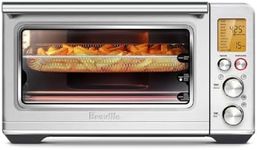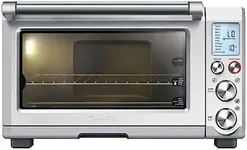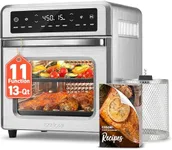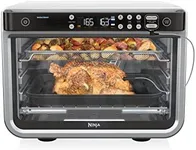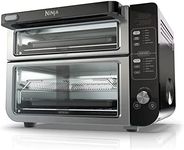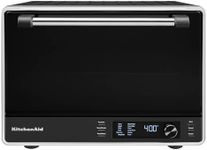Buying Guide for the Best Toaster Ovens
Choosing a toaster oven can make your kitchen more versatile, letting you toast, bake, broil, and reheat food without needing a full-sized oven. To find the best fit, think about how you plan to use it—whether for quick snacks, full meals, or specialty cooking. Understanding the main features will help you match a toaster oven to your cooking habits and kitchen space.CapacityCapacity refers to how much food the toaster oven can hold at once, usually measured in liters or by the number of slices of bread it can toast. This is important because it determines whether you can cook for just yourself, a couple, or a family. Small toaster ovens (2-4 slices) are great for singles or small kitchens, medium ones (4-6 slices) suit couples or small families, and large ones (6+ slices or able to fit a 12-inch pizza) are best for bigger households or those who want to cook larger meals. Think about the types and sizes of food you want to prepare most often to choose the right capacity.
Functions and Cooking ModesToaster ovens can offer a range of functions like toasting, baking, broiling, roasting, air frying, and even dehydrating. The importance of this spec lies in how much versatility you want. Basic models may only toast and bake, while advanced ones can replace several kitchen appliances. If you just want to make toast and reheat leftovers, a simple model is enough. If you want to experiment with recipes or cook a variety of foods, look for more cooking modes. Match the functions to your cooking style and needs.
Temperature RangeThe temperature range tells you the lowest and highest heat settings the toaster oven can reach. This matters because certain recipes require specific temperatures. Lower minimums are good for warming or slow-cooking, while higher maximums are needed for broiling or crisping. Basic models may have a limited range (like 150°F to 400°F), while more advanced ones can go lower and higher. If you plan to use your toaster oven for a variety of dishes, look for a wider temperature range.
Size and Counter SpaceThe physical size of the toaster oven affects how much counter space it will take up in your kitchen. This is important if you have limited space or want to keep your kitchen uncluttered. Compact models are easier to fit in small kitchens, while larger ones need more room but offer more cooking space. Measure your available counter area before choosing, and consider how often you'll need to move or store the appliance.
Ease of CleaningEase of cleaning refers to how simple it is to keep the toaster oven clean after use. Features like removable crumb trays, non-stick interiors, and dishwasher-safe parts make cleaning much easier. This is important because regular cleaning keeps your toaster oven working well and prevents burnt-on food smells. If you want low maintenance, look for models with these easy-clean features.
Controls and DisplayControls can be manual (knobs and dials) or digital (buttons and screens). This spec is important for ease of use and precision. Manual controls are straightforward and durable, while digital controls offer more precise settings and sometimes preset cooking programs. If you prefer simplicity, manual controls may be best. If you like more options and accuracy, digital controls could be a better fit.
Safety FeaturesSafety features include things like automatic shut-off, cool-touch exteriors, and non-slip feet. These are important for preventing accidents, especially if you have children or pets in the home. If safety is a top concern, look for models with these features to give you peace of mind during use.

